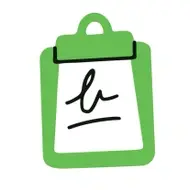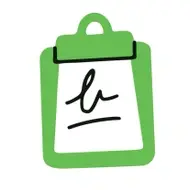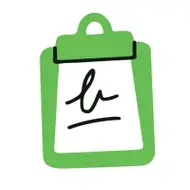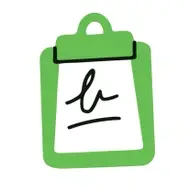Coordinator Job Posting Template

About [YOUR ORGANIZATION’S NAME]
Give a quick elevator pitch on your organization. You may want to include:
- How long your organization has been in operation
- A brief description of your mission, as well as the services, programs, or products you offer
Coordinator, [DEPARTMENT / WORK AREA]
Prior to completing this section, you’ll want to have already landed on a job title for the role. When thoughtfully selected, a job title can effectively convey levels of responsibility and experience. Generally, organizations use “coordinator” or “associate” to evoke an entry or near-entry role. “Assistant,” on the other hand, might mean someone who has no full-time professional experience.
Next, draft a one sentence summary of the role so that job seekers can easily get a preview of what’s to come. This is also a good place to note to whom the role will report. Here’s an example from Idealist for a coordinator role:
Reporting to the Associate Director of Editorial and Career Content, the Content Coordinator will support content marketing and creation, publication, and operations.
Responsibilities
This section should offer a high-level overview of duties. No need to include everything; the details can come later.
Typically, positions at this level are carrying out assignments and processes, and may own one or two work areas that could result in increased levels of autonomy and leadership in the future.
In the Idealist example shared above, here’s how we listed some of the responsibilities:
- Manage content across blogs including (but not limited to) reviewing and loading articles into our in-house content management system (CMS), selecting images to pair with content, coordinating with the in-house designer, and owning the publication calendar.
- Oversee all landing pages across departments and teams. This includes project management and coordination, copywriting, partnering on design/format, and implementation.
- Support the building and deployment of marketing emails.
- Write and disseminate relevant resources for Idealist audiences.
- Monitor a variety of general email inboxes and respond or forward as necessary.
Who we’re looking for
It’s important to edit this section with an eye to what you truly need in this candidate, both in terms of skills/traits and experience.
Typically roles at the coordinator- or associate-level require 0-2 years experience in that specific work area. For entry-level roles, we highly suggest bringing more candidates into your pool by not relying solely on past professional experience. For example: it stands to reason that someone who worked at a coffee shop has skills like patience, attention to detail, and adaptability––skills that would well-serve your future office manager. Think outside of the box to bring more candidates into consideration.
One more thing to consider: only list your must-haves (i.e. skip the nice-to-haves). Nice-to-haves may cause some candidates to opt out of the process, often with implications for race/ethnicity, gender, and more. Take a look at your list of desired skills and experiences, and edit brutally!
Here are a few things you could include in this section:
- Specific experience that you need in this role. It makes sense that someone in a communications role has written marketing materials before, though consider exactly what it is you’re looking for and how much of it you need.
- Qualities that would make a candidate successful. For example, an Operations Coordinator will probably be successful if they are detail- and process-orientated. At the same time, watch out for wanting everyone to have a sense of humor; in most roles, this is not necessary in order to complete a task, but we’ve seen it spring up in descriptions time and again. While that’s nice-to-have, remember what we should do with nice-to-haves!
- Experience with a kind of technology, like accounting software for a finance coordinator. Then again, consider the requirement. Do they have to know the exact accounting software already? Or can they train on the job?
Salary and benefits
Even if your state or city doesn’t require a salary range on job postings, we strongly recommend that you include it. This helps communicate what your organization can offer, and gives candidates a better understanding as to whether it’s a fit for them.
You should also document benefits, both the standard (medical, time off, etc.) and anything fun (bring your parakeet-to-work day!) about your organization.
Internal Idealist job postings include a brief snapshot of benefits, things like:
- Specific paid time off, like vacation, sabbatical leave, time off to volunteer, sick leave, and parental leave
- Specific health insurances offered, like medical, dental, and vision
- Home office set-up allowance
- Reimbursement for learning and wellness
Other important aspects of the role
Here are a few suggestions for what to include in this catch-all section:
- Work environment. Normally, we’d advise this to be a space where you talk about your organization’s office environment and what candidates can expect in terms of equipment and facilities. However, as of this writing in mid-2022, many organizations are still working remotely. Be specific about what you require of the candidate, whether remote, in-person, or a hybrid work arrangement, and any specific days or times they might need to be at the office or other site.
- How to apply. All parts of a listing should be clear and economic in language, but this section really requires it. Be specific in the materials you require––resume, cover letter, application exercise, work samples, etc. Remember to check the listing to ensure that the application email address or link is typo-free—do a test click just to confirm. If there’s a date by which the application period will close, include that here as well.
- Encouraging diverse applicants. It’s common to see employers encouraging diverse candidates to apply. Sometimes this is for legal compliance for federal contractors, and in that case you should refer to those guidelines.
For all organizations aiming to build more equitable teams, we suggest that you post something authentic to your organization culture. In past surveys, job seekers have expressed frustration when this kind of statement seems like lip service.
Here’s a sample from our friends at The Partnership for Public Service: “The Partnership is an inclusive organization that fosters learning, collaboration and respect. We actively recruit for diversity in our workplace, believing that a range of backgrounds, perspectives and experiences contributes to our mission of revitalizing government. The Partnership for Public Service is an equal opportunity employer and will not discriminate against any applicants for employment on the basis of race, color, religion, sex, age, national origin, veteran status, disability; or on any other basis prohibited by law.”
- **
Check out our other job posting templates for all of your organization's open roles!






